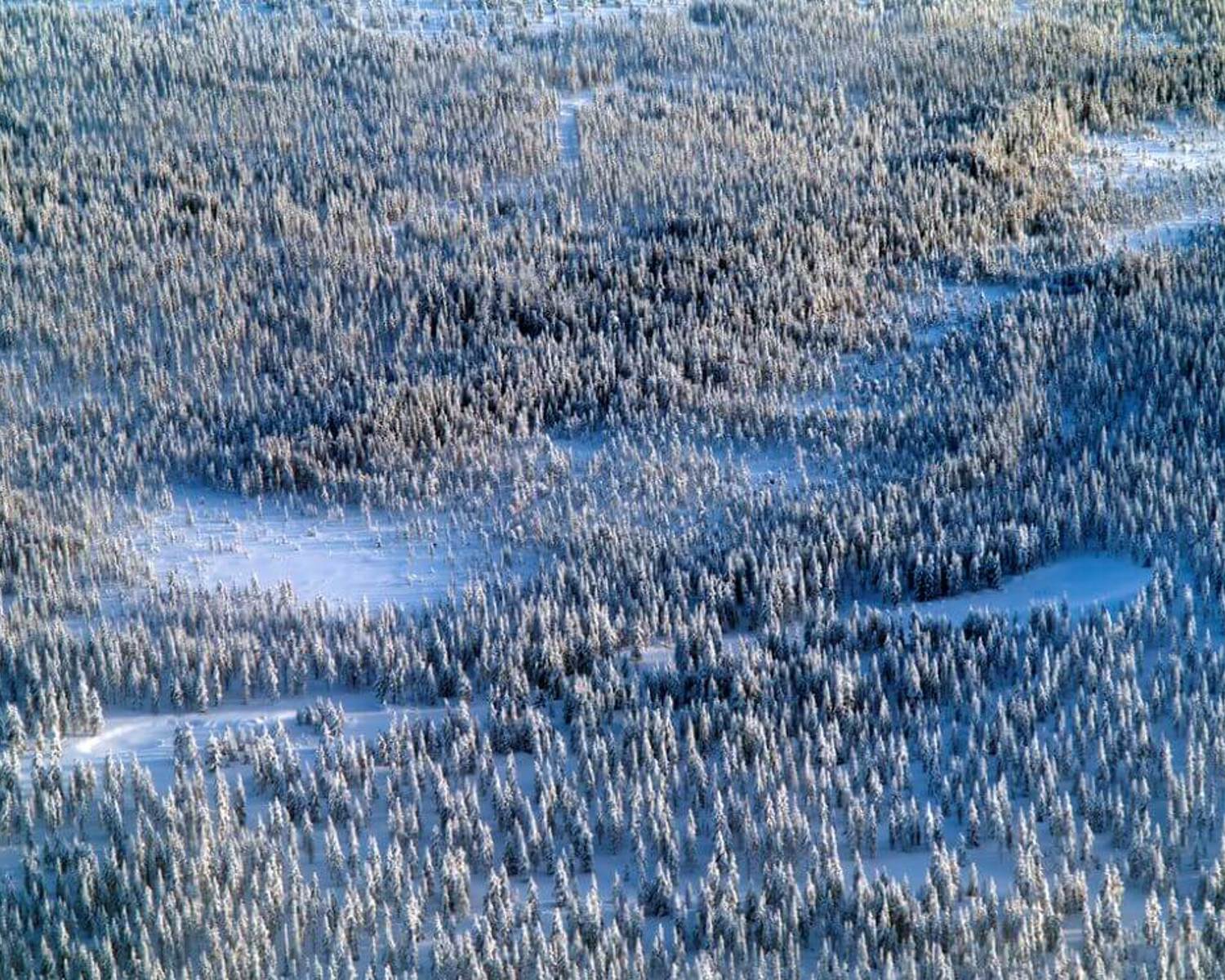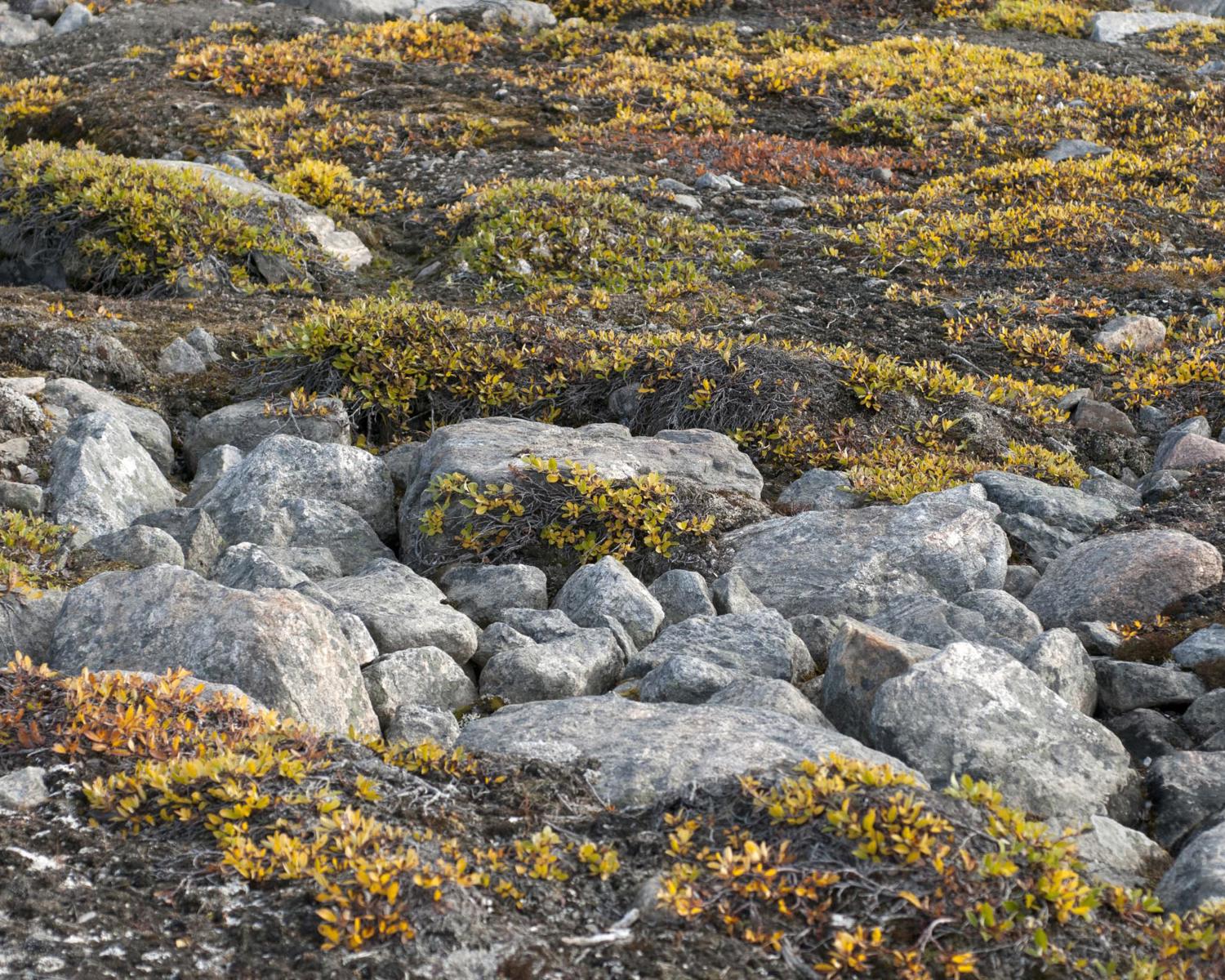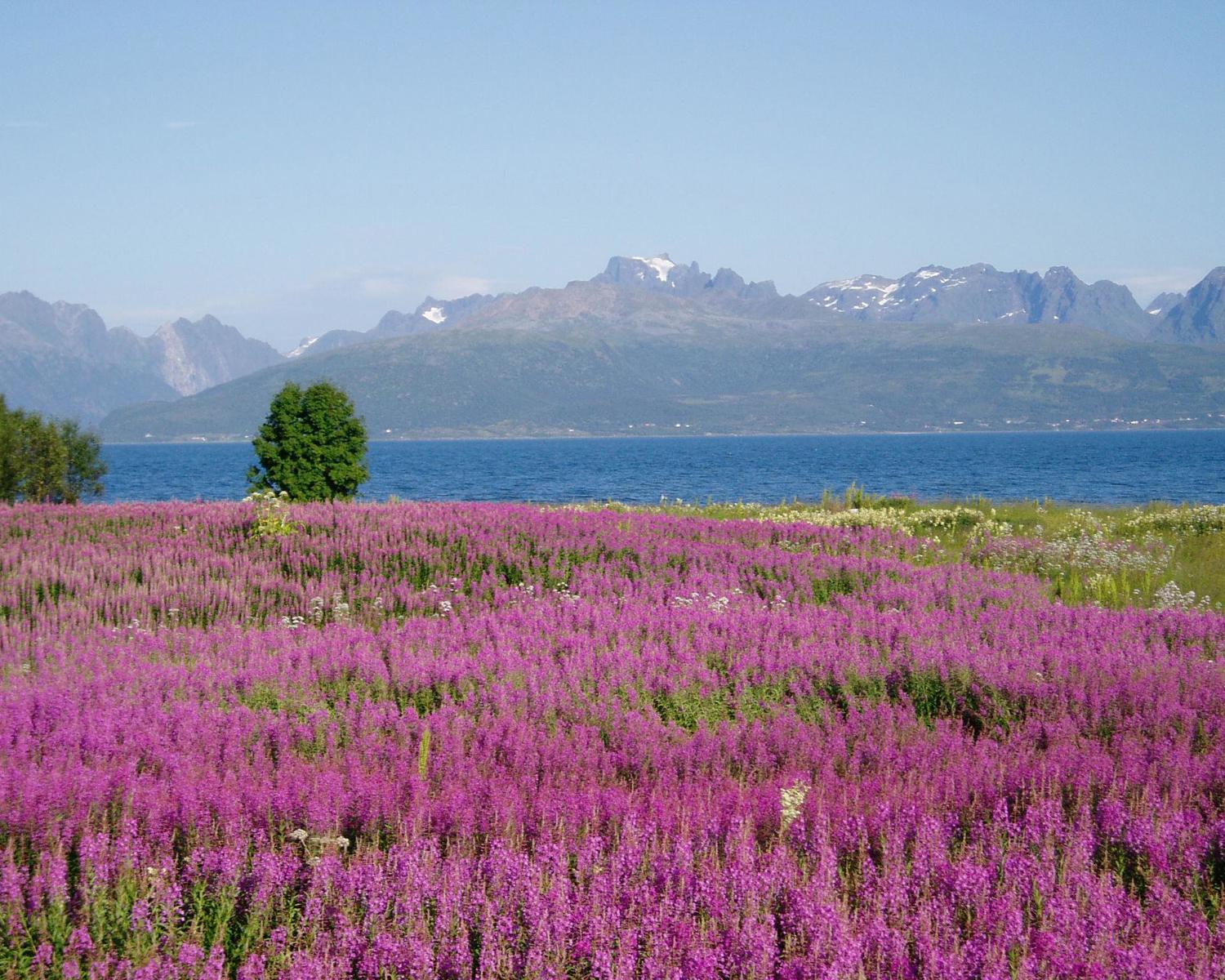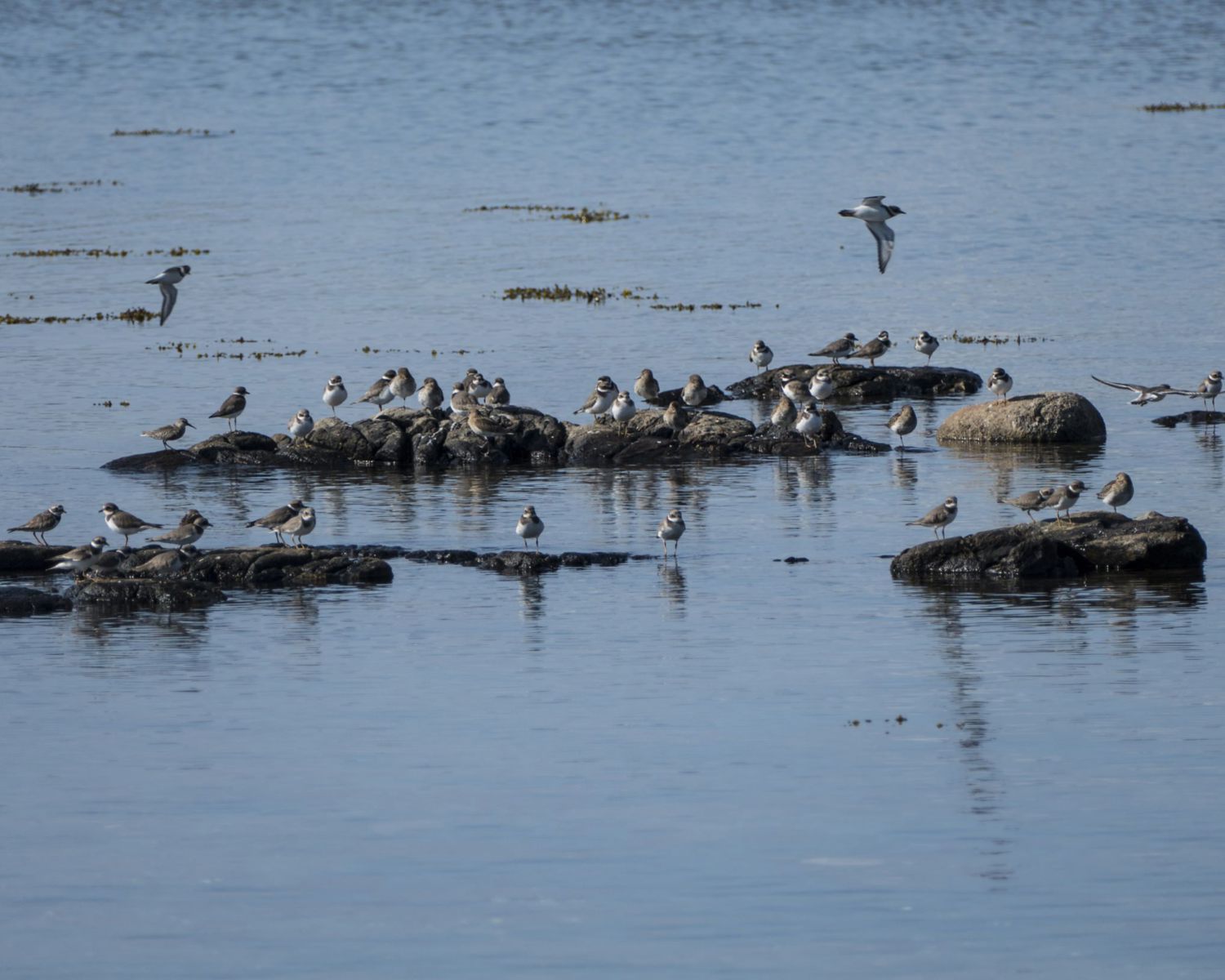Afforestation, reforestation and forest management

Although the rate of deforestation has slowed over the last few decades, the world is still losing forest cover (FAO 2020). Adequate management, protection, and restoration of existing forests, and the planting of unforested areas, play a crucial role in climate mitigation scenarios (IPCC AR6 WG3), and many countries now include forests in their climate mitigation targets (NDCs).The Northern and Arctic regions are essential in this endeavor since they are home to large swaths of boreal forests that make up 27% of total global forest area (FAO 2020).
Forest-based climate mitigation can occur through various means, here referred to as forest management and afforestation and reforestation. Forest management refers to the proper management of existing forests and the utilization of harvested wood products. This can be done with the aim of enhancing their carbon sink function, i.e., increasing site-level C density (e.g., intensive management, fertilization), increasing landscape-scale C stocks (e.g., sustainable forest management), or increasing off-site C in products (e.g., longer-lived wood products). Management practices can also aim to reduce carbon sources through: maintaining forests (e.g., preventing deforestation and land-use change), maintaining site-level C density (e.g., avoid degradation), maintain landscape-scale C stocks (e.g., suppress disturbances), and increase bioenergy and substitution (e.g., residue management) (Lemprire et al. 2013; Smyth et al. 2018).
Afforestation refers to the process of planting trees on previously unforested land, while reforestation aims to replant trees in areas where forests were removed. Apart from physically planting trees, successful Afforestation and Reforestation (AR) projects need to ensure that the planted trees survive, and that the right kinds of trees are planted that would best fit within local systems (for example to optimize biodiversity or provide co-benefits to local populations). AR is an important part of all climate mitigation scenarios (see IPCC AR6 WG 2022). The measure may be best suited to the tropics due fast growing rates and high carbon uptake, and limited negative geophysical effects like a lowering of albedo (Lewis et al. 2019; IPCC AR6 WG3).
Analysis overview

Technological Readiness Level (TRL)
High 3
Technological Readiness Level (TRL)
A technology with a TRL of 7-9: TRL 7 – prototype demonstrated; TRL 8 – system complete; TRL 9 – system proven

Scalability
Medium 2
The CDR potential for a scaling up of AR and forest management is large. However, physically, it must be ensured that it does not compete with other requirements, like food and water security, and that it is not detrimental to climate goals, such as local biophysical effects (e.g., albedo reduction might outweigh the effect of carbon sequestration; Pielke et al., 2011).
It must also be ensured that the planted trees are climate resilient and can resist likely increased extreme temperatures. There are very accessible sites where forests could cheaply and effectively be restored or planted at scale (IPCC AR6 WG3). Because a/reforestation in tropical regions comes with significant biophysical climate benefits, these regions would be especially suited for AR. However, Windisch et al (2022) note that such projects would likely clash with food production.
Scalability
Physically somewhat scalable; linear efficiency

Timeliness for near-future effects
High 3
Timeliness for near-future effects
Implemented in time to make a significant difference

Northern + Arctic potential
Medium 2
The Vogt et al. (2022) study on the role of AR in the Nordic region clearly states that 'The potential for re-/afforestation in the Nordic countries is limited compared to other European countries, as a large proportion of their land is already forested, with relatively limited areas suitable for agriculture.' They moreover conclude that both the CDR effect and the net climate effect of AR in the Nordic region remains uncertain and is still debated in scientific studies. Although many assessments of AR neglect biophysical effects and mostly focus on CDR estimates (Breil et al. 2023).
Dashti et al. (2023) study strongly highlighted the importance of the biophysical effects of land cover change, and note this is particularly strong in higher latitudes. In fact, whereas AR generally has an extra cooling effect on lower latitude regions, it risks reducing albedo in Northern regions and negating all climate positive effects (Bright et al, 2017; Windisch, 2022).
Alongside being a CDR measure, AR and forest management improvements are also used in the Arctic and Northern regions to increase biomass production to replace fossil fuels (see BECCS). Melnikova et al (2022) study found that BECCS would likely be a more effective CDR method at high latitudes. As growing forests for both functions could lead to different ecosystem and climate effects, these aims have to be weighed against each other (Vogt et al, 2022).
Due to warming temperatures, land cover changes in northern and arctic regions are already changing rapidly. This must be taken into consideration when planting trees on a large scale, as it might for example be a threat to previously largely open spaces or low-growth ecosystems (Halldórsson et al., 2008). This effect is for example visible in Iceland, where incentives to reforest the island have been observed to have a major impact on ground nesting birds (Pálsdóttir et al, 2022).
Northern + Arctic potential
Statistically detectable impacts in the Arctic above the global average; no difference between deploying the solution here or elsewhere

Global potential
High 3
Estimates of total sequestration would partially depend on carbon prices, and Austin et al. 2020 suggested that 1.6 GtCO2 yr–1 could be sequestered globally through AR for an annual cost of USD130 billion if prices were at USD100 tCO2 –1. Roe et al’s (2021) literature review showed a median AR CDR rate of 475 MtCO2 yr−1 in 2050. The IPCC AR6 Wg3 (2022) gives 'medium confidence that the global technical mitigation potential of afforestation and reforestation activities by 2050 is 3.9 (0.5–10.1) GtCO2 yr–1', while Fuss et al. (2018) give a lower global estimate of 0.5–3.6 GtCO2 year-1 by 2050.
With regards to forest management, Ameray et al. (2021) note that there is currently low understanding of ‘how forest management strategies affect the net removal of greenhouse gasses and contribute to climate change mitigation’, and Roebroek et al (2023) even show that cessation of management strategies and allowing natural forest development can have positive climate effects.
Global potential
Major impacts detected

Cost - benefit
Cost-effective 3
Cost - benefit
Low investment cost compared to the avoided damage cost (e.g., a few %) and/or inexpensive relative to other measures with similar impact

Environmental risks
Low risk 3
Environmental risks
Very limited, site-specific effects restricted to the solution deployment location only

Community impacts
Neutral 2
Community impacts
Unnoticeable or negligible positive or negative effects

Ease of reversibility
Easy 3
Ease of reversibility
Easily reversible naturally

Risk of termination shock
Low risk 3
Risk of termination shock
Low or insignificant termination shock or damage

Legality/governance
Possible 3
Legality/governance
Currently legal to deploy, with governance structures in place to facilitate it and/or financial incentives to develop it

Scientific/media attention
High 3
Afforestation is generally a popular and acceptable CDR method and often framed as a “natural” measure (Walller et al, 2023). With regards to this, the IPCC AR6 Wg3 notes that ‘The sometimes sole attention on afforestation and reforestation – suggesting it may solve the climate problem to large extent, in combination with the very high estimates of potentials – have led to polarization in the debate, resulting in criticism to these measures or an emphasis on nature restoration only’ (2022, p781).
There are major international AR campaigns, like the One Trillion Trees project by the World Economic Forum (https://www.1t.org/) and the The Bonn Challenge (bonnchallenge.org), which aims to restore 350 million hectares by 2030. There is also significant commercial interest through measures such as REDD+ and carbon offsets, and many companies are now investing in tree planting to offset their emissions.
The State of Carbon Dioxide Removal report (2023) finds that the relative number of scientific studies on AR has significantly decreased over the last years, in favour of other CDR measures like soil carbon sequestration and especially biochar.
Scientific/media attention
Numerous scientific papers with substantial funding and ongoing research groups; significant media attention and "hype"; many companies exploring commercialization options
References
Ameray, A., Bergeron, Y., Valeria, O. et al. Forest Carbon Management: a Review of Silvicultural Practices and Management Strategies Across Boreal, Temperate and Tropical Forests. Curr Forestry Rep 7, 245–266 (2021). https://doi.org/10.1007/s40725-021-00151-w
Austin, K. G., Baker, J. S., Sohngen, B. L., Wade, C. M., Daigneault, A., Ohrel, S. B., ... & Bean, A. (2020). The economic costs of planting, preserving, and managing the world’s forests to mitigate climate change. Nature communications, 11(1), 5946. https://doi.org/10.1038/s41467-020-19578-z
Breil, M., Krawczyk, F., & Pinto, J. G. (2023). The response of the regional longwave radiation balance and climate system in Europe to an idealized afforestation experiment. Earth System Dynamics, 14(1), 243-253. https://doi.org/10.5194/esd-14-243-2023
Chiquier, S., Patrizio, P., Bui, M., Sunny, N., & Mac Dowell, N. (2022). A comparative analysis of the efficiency, timing, and permanence of CO 2 removal pathways. Energy & Environmental Science, 15(10), 4389-4403. https://doi.org/10.1039/D2EE01021F
Dashti, H., Smith, W. K., Huo, X., Fox, A. M., Javadian, M., Devine, C. J., ... & Moore, D. J. (2022). Underestimation of the impact of land cover change on the biophysical environment of the Arctic and boreal region of North America. Environmental Research Letters, 18(1), 014012. https://doi.org/10.1088/1748-9326/ac8da7
FAO. 2020. Global Forest Resources Assessment 2020 – Key findings. Rome. https://doi.org/10.4060/ca8753en
Grassi, G., House, J., Dentener, F. et al. The key role of forests in meeting climate targets requires science for credible mitigation. Nature Clim Change 7, 220–226 (2017). https://doi.org/10.1038/nclimate3227
Kreidenweis, U., Humpenöder, F., Stevanović, M., Bodirsky, B. L., Kriegler, E., Lotze-Campen, H., & Popp, A. (2016). Afforestation to mitigate climate change: impacts on food prices under consideration of albedo effects. Environmental Research Letters, 11(8), 085001. https://doi.org/10.1088/1748-9326/11/8/085001
Lemprière, T.C., Kurz, W.A., Hogg, E.H., Schmoll, C., Rampley, G.J., Yemshanov, D., McKenney, D.W., Gilsenan, R., Beatch, A., Blain, D., Bhatti, J.S., and Krcmar, E. 2013. Canadian boreal forests and climate change mitigation. Environmental Reviews. 21(4): 293-321. https://doi.org/10.1139/er-2013-0039
Lewis, T., Verstraten, L., Hogg, B., Wehr, B. J., Swift, S., Tindale, N., ... & Smith, T. E. (2019). Reforestation of agricultural land in the tropics: The relative contribution of soil, living biomass and debris pools to carbon sequestration. Science of the Total Environment, 649, 1502-1513. https://doi.org/10.1016/j.scitotenv.2018.08.351
Melnikova, I., Ciais, P., Tanaka, K., Vuichard, N., & Boucher, O. (2022). How do afforestation and BECCS differ in their impacts on the land carbon cycle and surface climate? https://doi.org/10.21203/rs.3.rs-2137758/v1
Mooney, P. A., & Lee, H. (2022). Afforestation affects rain-on-snow climatology over Norway. Environmental Research Letters, 17(5), 054011. https://doi.org/10.1088/1748-9326/ac6684
Moreau L, Thiffault E, Cyr D, et al. How can the forest sector mitigate climate change in a changing climate? Case studies of boreal and northern temperate forests in eastern Canada. Forest Ecosystems, 2022, 9(2): 100026. https://doi.org/10.1016/j.fecs.2022.100026
Pálsdóttir, A. E., Gill, J. A., Alves, J. A., Pálsson, S., Méndez, V., Ewing, H., & Gunnarsson, T. G. (2022). Subarctic afforestation: Effects of forest plantations on ground‐nesting birds in lowland Iceland. Journal of Applied Ecology, 59(10), 2456-2467.
Pielke Sr, R. A., Pitman, A., Niyogi, D., Mahmood, R., McAlpine, C., Hossain, F., ... & de Noblet, N. (2011). Land use/land cover changes and climate: modeling analysis and observational evidence. Wiley Interdisciplinary Reviews: Climate Change, 2(6), 828-850. https://doi.org/10.1111/1365-2664.14238
Roe S et al 2021 Land-based measures to mitigate climate change: potential and feasibility by country Glob. Change Biol. 27 6025–58. https://doi.org/10.1111/gcb.15873
Roebroek, C. T., Duveiller, G., Seneviratne, S. I., Davin, E. L., & Cescatti, A. (2023). Releasing global forests from human management: How much more carbon could be stored?. Science, 380(6646), 749-753. https://doi.org/10.1126/science.add5878
Smyth, C.E., Smiley, B.P., Magnan, M. et al. Climate change mitigation in Canada’s forest sector: a spatially explicit case study for two regions. Carbon Balance Manage 13, 11 (2018). https://doi.org/10.1186/s13021-018-0099-z
Vogt, R. D., de Wit, H., & Koponen, K. (2022). Case study on impacts of large-scale re-/afforestation on ecosystem services in Nordic regions. NEGEM-Quantifying and Deploying Responsible Negative Emissions in Climate Resilient Pathways. Horizon 2020, Grant Agreement no. 869192Avaialble at: https://www.negemproject.eu/wp-content/uploads/2023/05/D-3.6-Case-study-on-impacts-of-large-scale-reforestation-afforestation-in-Nordic-Countries.pdf [Accessed 19 July 2024]
Waller, L., Rayner, T., & Chilvers, J. (2023). Searching for a public in controversies over carbon dioxide removal: An Issue Mapping Study on BECCS and afforestation. Science, Technology, & Human Values, 48(1), 34-67. https://doi.org/10.1177/01622439211043568
Windisch, M. G., Humpenöder, F., Lejeune, Q., Schleussner, C. F., Lotze-Campen, H., & Popp, A. (2022). Accounting for local temperature effect substantially alters afforestation patterns. Environmental Research Letters, 17(2), 024030. https://doi.org/10.1088/1748-9326/ac4f0e








